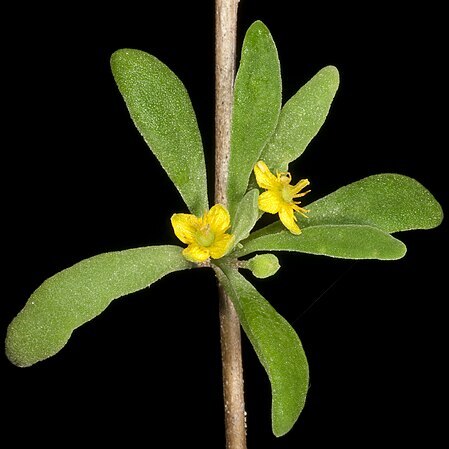Prostrate, scrambling or climbing herb or undershrub with long branches. Branchlets alternate, densely papillose; young stems also with vesicular hairs. Leaves clustered or scattered, lanceolate, oblanceolate, rhomboid, ovate or obovate, 1–5 cm long, 2–40 mm wide, narrowing into petiole up to 10 mm long; midvein visible below; base conspicuously persistent. Flowers solitary or in pairs; pedicels 5–30 mm long, filiform, drying black. Perianth segments 4, oblong with incurved apex, c. 3 mm long, papillose outside, hairy towards apex, yellow inside. Stamens 12–20. Ovary glabrous; styles 2, rarely 3, robust, 1.5–2.5 mm long. Fruit succulent, globular, 5–8 mm long, red. Seed 1, truncate, pear-shaped, c. 2 mm long, faintly reticulate, brown. [See also Green (1994).]
More
A succulent climber. It can climb 3 m high. The stems are slender and fleshy. It can form dense mats over the ground. The leaves are thick and diamond shaped. They are 1.5-4 cm long. They are bright green and have water filled pustules on the surface. The flowers are small and yellow. They are on slender stems arising from the leaf bases. The fruit are red to black and berry like. They have a hard seed inside. The leaves are smaller and darker than Tetragonia tetragonoides and lack distinct veins.

